A few months ago, maybe after a pint too many, you were dragged into signing up for your first triathlon race. And now the dreaded race day is getting closer and you are starting to panic about all the small details. Welcome to the club.
Panic NO MORE.
We are going to cover all the details that will let you finish safely and enjoy your race.
I assume you signed up for an olympic or sprint distance, if you are aiming for longer distances you are a brave soul and hopefully you’ve got all the basics covered already.
It would be best to have at least a couple of weeks left – possibly a month – so you can cover in training some of the details below.
A word of caution: the following advice is based on my personal experience and knowledge, this does not constitute coaching, medical or dietary advice. This is meant to be the friendly hand that I wish I had for my first race.
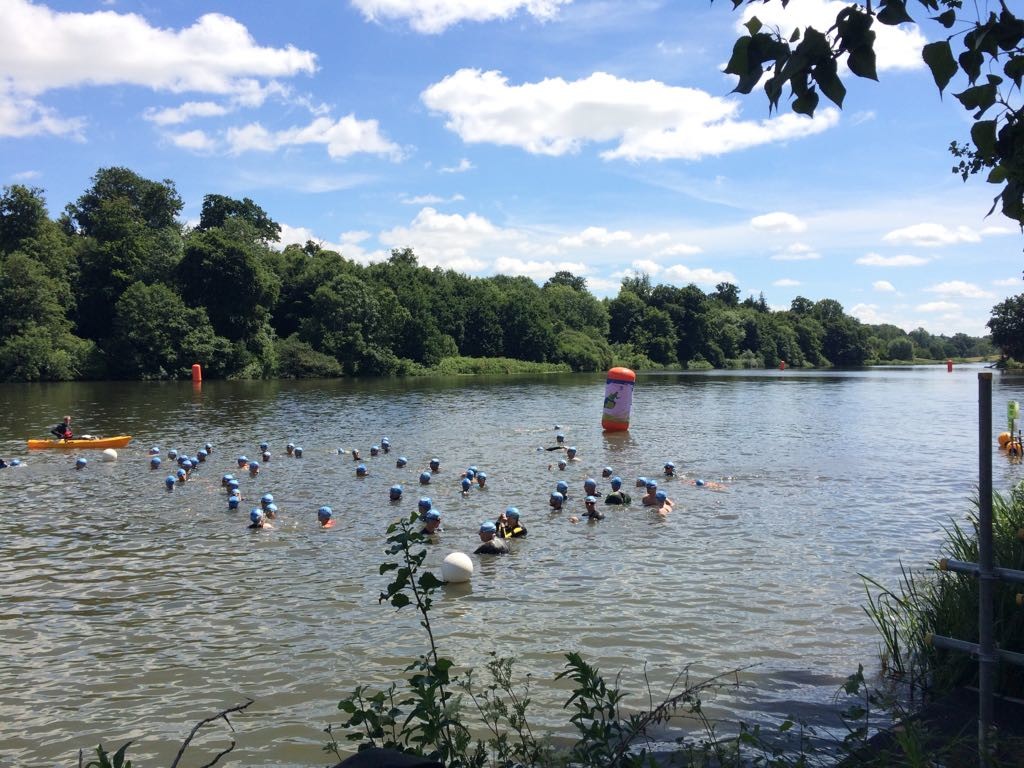
Before the race:
- Take it easy! Make sure you have everything you need a few days before the race and pack the night before. Allow plenty of time to get to the race, register, go to transition, etc. You might be already feeling the tension of the race, you don’t want to add any additional stress. Pro tip: a checklist, like this one, helps!
- Get into the transition area and make note of the swim, bike and run exits so that you can make a beeline for them when you come in, the less stress you can have during the race the better! Organise your stuff, rehearse the steps of what you will do in each transition so that you know what order to place your things. It’s not a bad idea to speak to marshalls about what they will allow in the transition area as some races are quite strict.
- Getting into your wetsuit always takes longer than you think, so practice at home beforehand. It wouldn’t be a bad idea to practice getting out of it as well. You can make a couple of “race day friends” at the start by asking them to help you zip up. Pro tip: make sure you place the zip string in a convenient place for a quick release in transition.
- Nutrition is key. Hopefully you’ve practiced your race day nutrition rituals before the big day as you don’t want to be trying anything new (this applies to kit too!). It’s a fine balance to strike, not over or under fuelling, generally on the bike you want to be taking something small in every 20 minutes, breaking up your fuel bars before makes them easier to consume during the ride. Don’t wait until you get hungry, it will be too late then!
- Check that your bike is in good condition: brakes, tyres, gears and make sure you have not lost the bar-ends at the end of the handlebars as they are required for all races.
- Get plenty of rest. Depending on the race length and how much fatigue you’ve accumulated in training, you will need to taper in the week or two before the race. Don’t try to cram too much training into the week before, use this time to rest your body. Try to get a decent night’s sleep before the race.
- Pre-fuel properly. Some people talk about carb loading, which essentially means favour carbs in the days leading to the race, without excess. Especially if you’re doing a short distance, a healthy breakfast a few hours before the race that’s not too dissimilar to what you have on a normal training day should do.
- Don’t forget to bring some warm, dry clothes for the post-race. Especially if it is chucking down rain make sure you have a plan (e.g. drybag with warm clothes). Some races have a bag drop area or allow to leave bags in transition.
- Don’t forget to check out this 1-pager of the British Triathlon Federation rules.
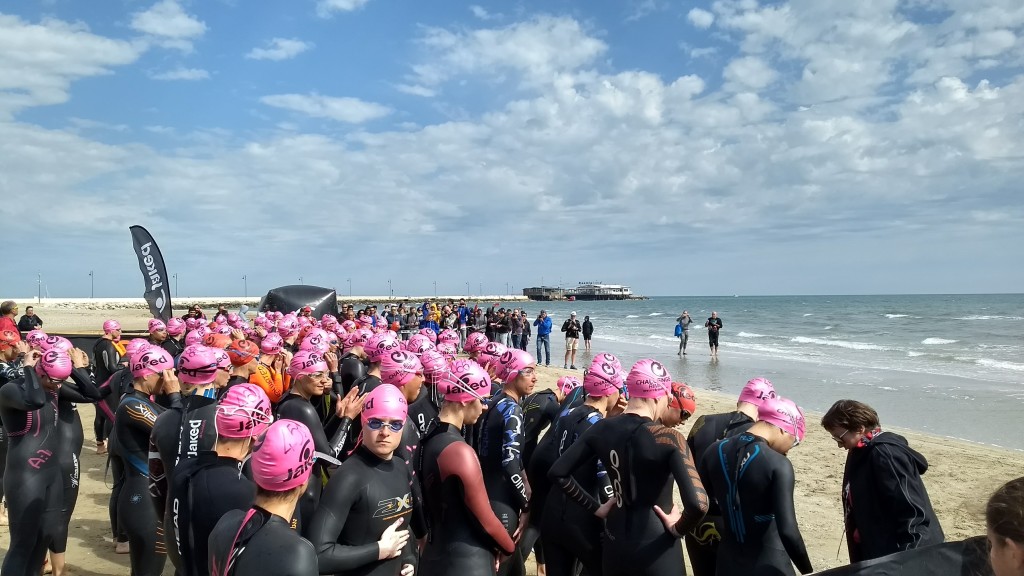
Swim:
- First of all, DO NOT PANIC, open water swimming can be daunting even in training. At a race you might feel a little more prone to panic, especially when the adrenaline and nerves get going, and when you are amongst the other competitors. Stay calm, warm up in the water by swimming a few strokes as well. Even letting a little water into the neck of your wetsuit can help you acclimatise better to the temperature, weirdly enough!
- Non-petroleum based vaseline-like products are great to avoid chafing: put some on the back of your neck before wearing the wetsuit as well as your ankles and wrists as this helps when you are getting out of your wetsuit.
- In May, LFTC will be back at Stoke Newington Reservoir with Sunday open water sessions. Come along, it will help you get confident in open water and there will also be some race day simulations so that you get used to swimming with lots of other people around.
- If you are nervous at the race start, aim to stay on the sides and at the back of the wave. It is definitely better than being swum over and don’t worry about taking a longer trajectory.
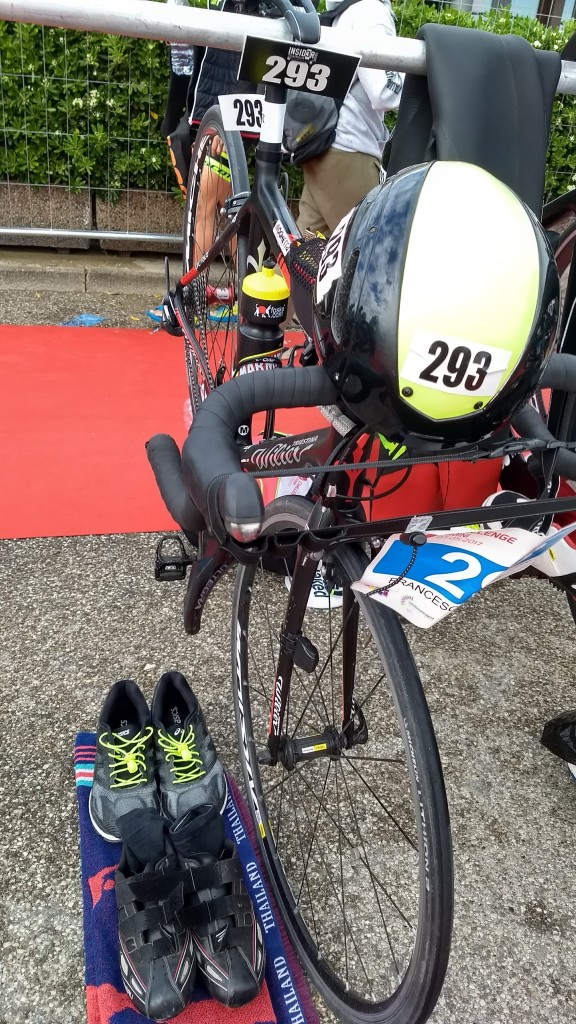
Transition 1:
Transition is the most overseen discipline. It is easy to practice and with relatively little training you can shave some seconds off your time!
- Let’s recap what should be in T1: helmet, race belt (you need to bring your own) with number secured, your bike (hopefully!), water bottle(s), cycling shoes or running shoes, cycling clothes (if you are not wearing a tri-suit), socks, nutrition (to take with you to fuel during the ride), a small towel to dry your feet and potentially some sunscreen if it’s a sunny day.
- You can practice transitions at home, set it all up and go through the process from getting out of the swim to clipping into your pedals. Repeat, repeat, repeat.
- Are you wearing a tri-suit or a swimming costume underneath the wetsuit? Check the race rules about “nudity” as some won’t allow you to just wear a swimming costume or trunks.
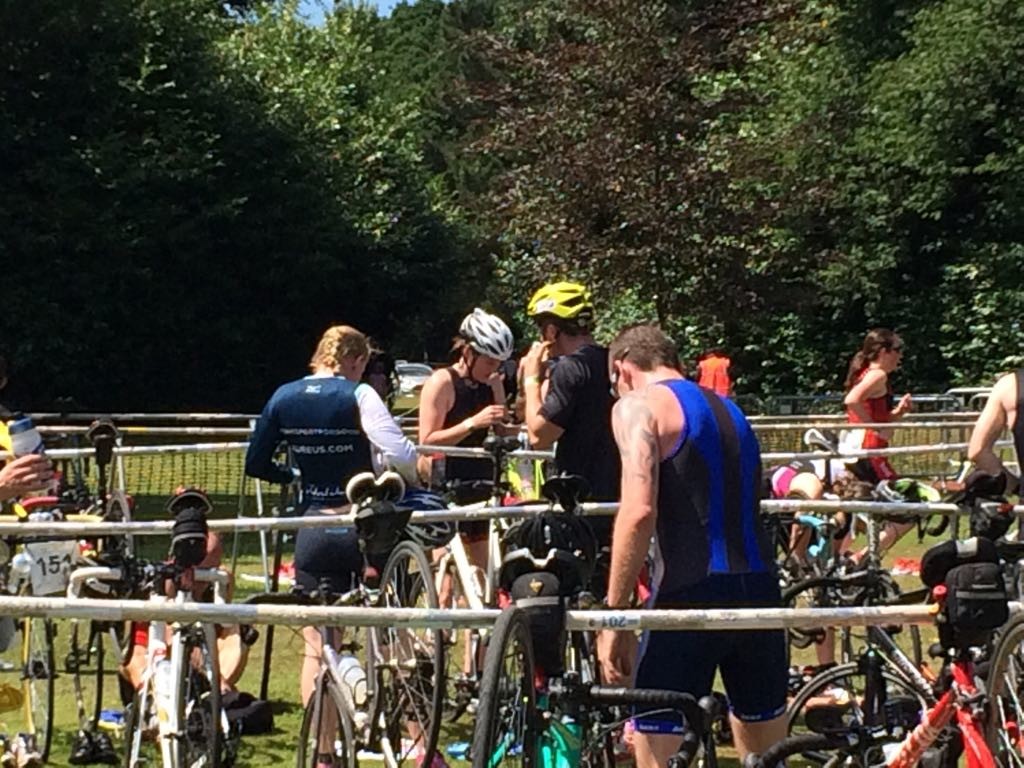
Bike:
- The start of the bike leg is the perfect time to refuel and rehydrate.
- Did you read the rules? It’s worth checking whether drafting on the bike is allowed. Usually it is not, but it goes from race to race. On the same subject drafting rules are quite strict and with many participants it could be hard to comply, just try not to do it intentionally if it is forbidden.
- If the weather is miserable, as the UK summer is quite unpredictable, keep a lightweight cycling jacket or gilet in transition.
- It’s rare, but you never know when you’ll get a puncture, so it’s always a good idea to know how to do a repair and carry a spare inner tube with you. Especially for your first race, taking some time to fix a puncture is better than a dreaded DNF. LFTC is running a puncture repair workshop and you find more details here.
- While transitioning from the bike to the run you might feel “jelly-legged”. Practice getting used to the feeling when you are training: after your ride just go for a short run, 10-20 minutes is enough. This will only help you on race day!
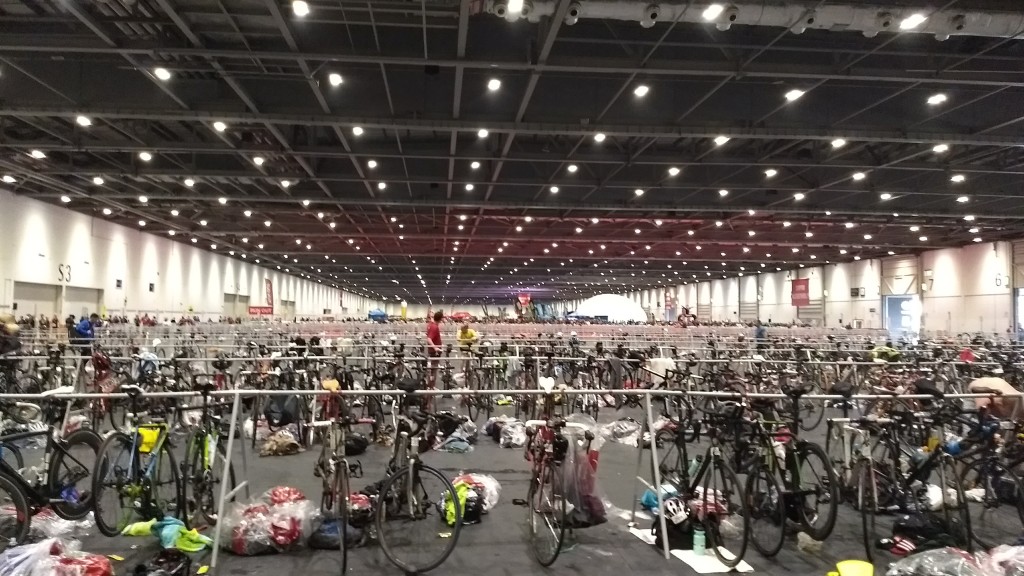
Transition 2:
- Let’s recap what should be in T2: running shoes (although you might be wearing the same shoes you cycled in), running top (if you aren’t in a tri-suit or are using a cycling jersey on the bike leg), nutrition that you may want to take onboard before or during the run.
- Just like T1, practice makes perfect. T2 is a lot faster, as you only have your trainers to worry about and the nutrition you want to have or take with you.
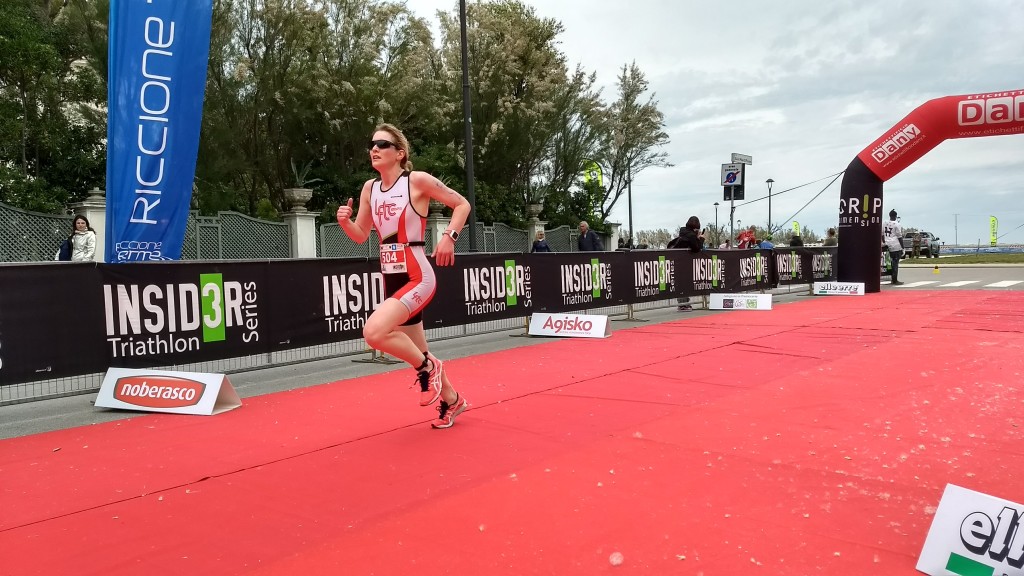
Run
- You made it to run, congrats!! Make sure you keep hydrating. Many races have fuel stations, but always be careful with gels as they might upset your stomach if you haven’t used them before. To be on the safe side, bring your own, or find out the brand that the race will be handing out and give them a trial run before the big day.
- Pace yourself. Your first triathlon is your benchmark. It’s good to not go flat out and instead gain some valuable feedback from your body so that you can improve for your next race. Also, if you go too hard to soon, you’ll hit the wall and not have the best experience, so save the sprinting for the very end!
- Don’t forget to smile! Most of the pictures are taken on the run and you want to make sure you have the best version of yourself in the race album. Enjoy it. It’s your first race, and that’s special!
Some of the tips above will help you to take seconds off your time, but you might want to take things easier in transition: walk instead of running, relax for a couple of minutes and refuel. If you need to walk in the run, walk! Lots of people do this in their first triathlon. Remember, no-one ever qualified for the World Championships on their first race, there will be plenty of chances to improve during your triathlon career.
If you are feeling better after reading this, but still have questions, speak to to the coaches or other members of the club, or leave us a comment below; we are all here to help each other. I wish you the best luck and give your fellow LFTC-ers a wave if you see them on the course, seeing a friendly face during the race can make all the difference!